Barcelona, Potsdam and Brighton are all home to some important and extensive Orientalism & Chinoiserie architecture around Europe.
East/West—cardinal directions that only mean something when compared to each other. While traveling around the world, though, you realize that the East is full of things from the West, and the West with things from the East. Whether it’s fried chicken food chains in India or design influences from Bangkok showing up on the runway in Paris, this world is increasingly global.
But it’s not a recent development.
During much of art history, the cross-cultural influences played a big part in the trends of the time. In much of the 19th century, Eastern styles and elements were used increasingly in the art, design and architecture across Europe. In time, the term Orientalism (and later Chinoiserie) came to be used to describe this style favored by many 19th century artists, writers & designers.
These days, the term is considered derogatory. Many artists who embraced the style had never traveled to the East and were instead creating works based on stereotypes. The ethnocentric view of the East by Orientalist artists led to many misapprehensions about foreigners and foreign cultures. The style was a precursor to the ostentatious Rococo style favored by many wealthy art patrons.
The style is typical of works commissioned and created for royalty and high society. I’ve spotted a handful of Orientalist works in the past few months while traveling around Europe. Dragons and elaborate patterns are a giveaway.
Orientalism in Brighton
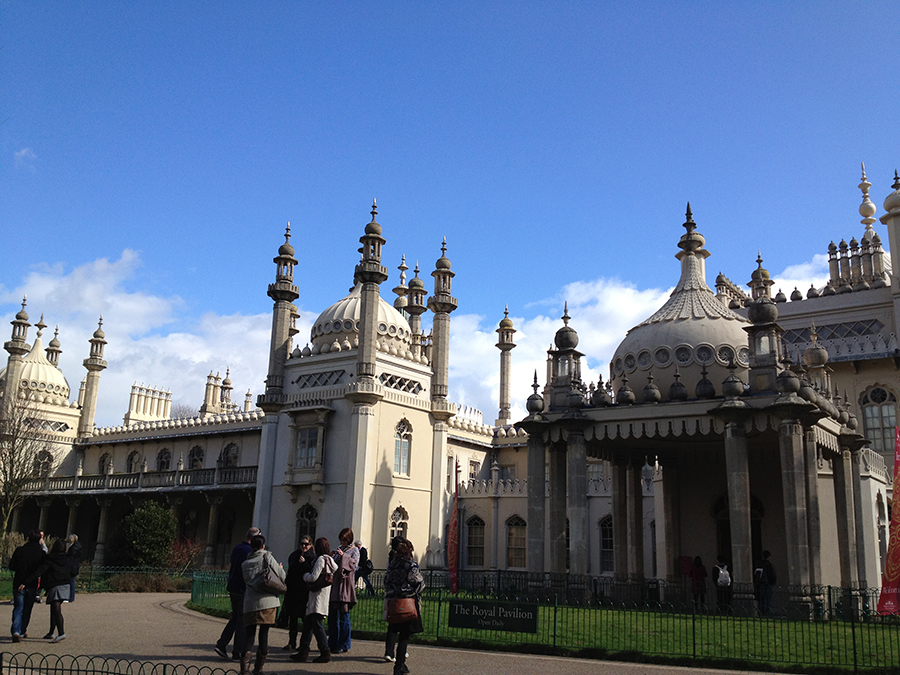
The Royal Pavilion in Brighton is an 18th century palace that was built for the Prince Regent (who later became King George IV). The exterior of the Brighton Pavilion is reminiscent of Indian styles, while the interior is an elaborate display of the Orientalist and chinoiserie styles popular at the time.
The Pavilion itself has an interesting history. Once Queen Victoria came to reign, she favored other palaces and neglected Brighton and its summer royal palace. In 1850, the city of Brighton petitioned to purchase the palace from the royal family, which Victoria agreed to. However, clever as she was, she essentially stripped the place down and kept all the interior decorations—even taking many of the wallpapers. Since that time, the city of Brighton has successfully turned the Royal Pavilion into a museum and is always on the lookout to purchase the original interior decorations. Much of the building has been restored and walking through the building today is like a festival. Each room is so elaborately decorated with strange and unusual designs (in the Orientalist and chinoiserie styles) that it’s hard not to be impressed by the grandeur of the building.
Unfortunately photography is forbidden inside the Royal Pavilion so you’ll just have to trust me that the design and style inside is simply amazing. Unlike anything you might expect for a royal palace.
Orientalism in Potsdam (near Berlin)
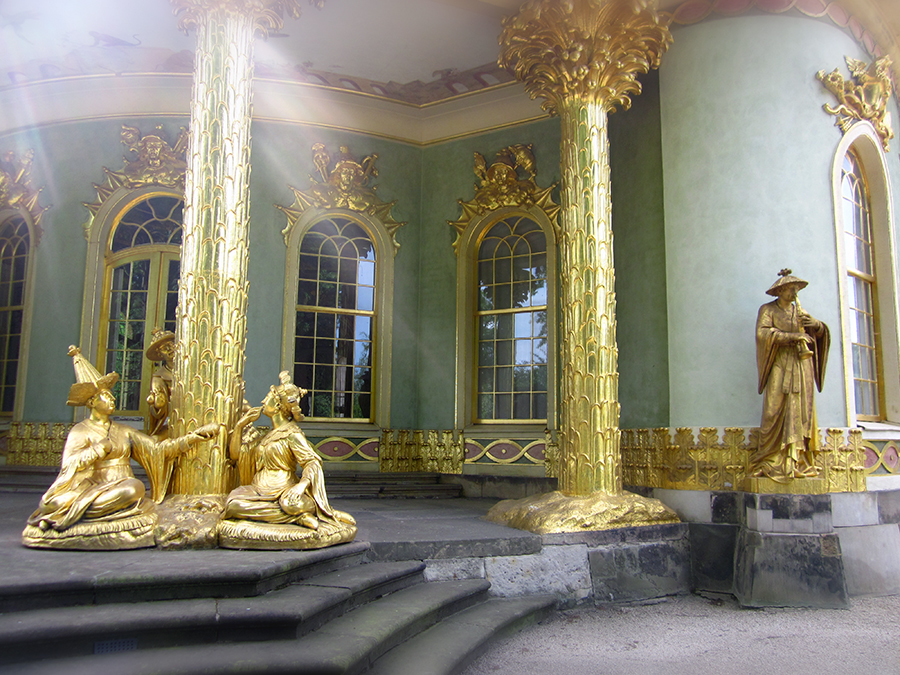
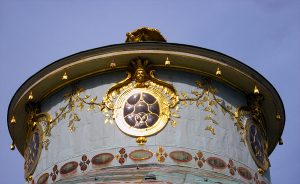
Potsdam—a 1,000 year old city on the outskirts of Berlin—is a UNESCO World Heritage Site for its many palaces and architectural quirks. The Sanssouci park with its many palaces and royal buildings was the summer home for the Prussian King, Frederick the Great. One small building in the Sanssouci park is the Chinese House—a building designed by Johann Gottfried Büring between 1755 and 1765. The garden pavilion (pictured here) is in the trendy Chinoiserie style with a mixture of rococo and Oriental design elements.
The elaborate gold-leaf designs are typical of Chinoiserie art: parrots, monkeys and Buddhas as well as Oriental fashion (including parasols) are scattered throughout the design of the Chinese House.
Orientalism in Barcelona
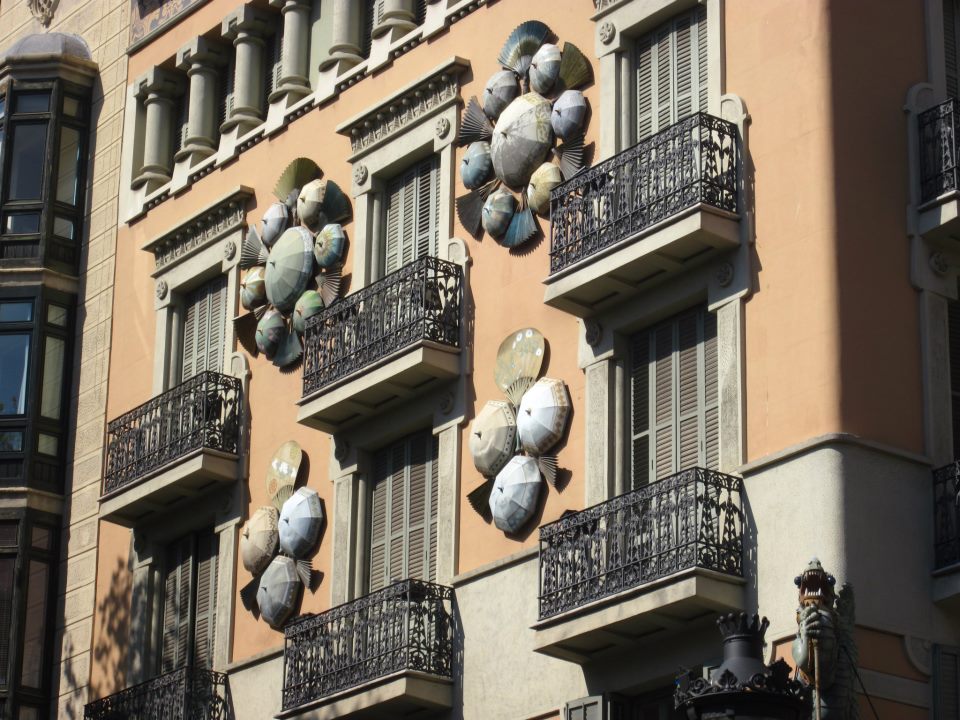
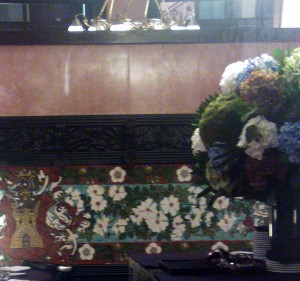
I spotted the above building while on an architectural walking tour of Barcelona. The Casa Bruno Quadros used to be an umbrella shop and sits on a prominent corner of Las Ramblas. It’s affectionately called the “House of Umbrellas” by the locals. The building was refurbished in 1883 when all these colorful parasols were added (as well as a dragon on the cornerstone). It was in anticipation for the 1888 Barcelona Universal Exhibition and Barcelona’s architectural scene was exploding at that time with weird and strange buildings. If there’s somewhere in Europe to find quirky architecture, there’s no better place than Barcelona.
Also on the architectural tour was the Hotel España. Inside the hotel’s bar, Bar Arnau, is a large alabaster fireplace designed by Eusebi Arnau. The modernist fireplace is set inside a contemporary bar, and just next door is the hotel restaurant which features Orientalist wallpaper.

Great piece, Adam. I remember how impressed and intrigued I was the first time I saw the Eastern influences in the Potsdam gardens.
If you hadn’t already guessed from the name of the cookbook, I’m totally into West-East East-West collusion and communication. On artistic as well as culinary levels. :)
Thanks Justin.
The West-East / East-West influences in food must be HUGE – just with spices alone…
nice post!
if I may: you have to take a look at one of the main element of gothic architecture: the pointed arch. That is an Indian invention, the “caithya arch”.
Well, you have been to Venice, too, and you have seen by yourself how much “orientalism” you can find.
Have a good weekend!
Hi Marianna – thanks for sharing about the “caithya arch.” And, yes, you’re definitely right that Venice has lots of Orientalist designs. It was such a popular style in the 19th century.
I was at Sanssouci park this spring and I noticed that the sculptures of “Asian” people looked like they were modeled after Europeans (in terms of body shape), and it seemed like the artist simply added a few stereotypical Asian things (chopsticks, squinty eyes, and bamboo hats) to the statue and called it a day.
Hey Violet,
Yep – that seems to be how this style of art works—make gross assumptions based on stereotypes.
Wow the Royal Pavilion is gorgeous! I never noticed the Oriental influence in European architecture.
I simply love Barcelona, one of my favourite architects Gaudi has influenced so many building there, Casa Bruno Quadros looks stunning, I would really like to see that building in person to see its full beauty, excellent post!